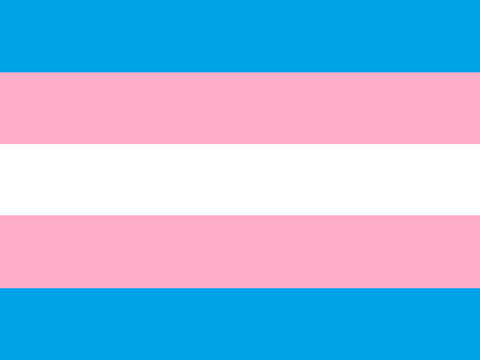5 Steps to Create an LGBTQ+ Inclusive Workplace
| Updated on
Creating an LGBTQ+ inclusive workplace is a powerful step towards fostering a respectful, accepting, and supportive work environment. For example, did you know that 31% of LGBTQ+ employees have felt unhappy or depressed at work? Not only does an inclusive workplace contribute to the well-being and satisfaction of every individual, it also drives innovation and enhances business performance.
This article gives you 5 actionable steps to build an LGBTQ+ inclusive workplace. So, whether you are an LGBTQ+ individual, an ally, or if you're a member of your company's Pride Employee Resource Group (ERG), we hope that you'll find this article useful!
For a full comprehensive guide on workplace LGBTQ+ inclusivity, which includes details on challenges LGBTQ+ employees face in workplaces, how to measure the success of inclusivity efforts, and more, please refer to this guide!
Article continues below

5 actionable steps to building an LGBTQ+ inclusive workplace
Creating an LGBTQ+ inclusive workplace is not a one-off event, but rather, a continuous journey. It requires a concerted effort from all individuals within an organisation, from top-level management to entry-level employees. An inclusive work environment fosters a sense of belonging and respect, making everyone feel valued and appreciated. Here are some steps you can take to build an inclusive workplace culture.
1. Implement inclusive policies
Workplace inclusivity begins with a formal commitment, and that usually means establishing comprehensive, LGBTQ+ inclusive policies. These policies should be clearly communicated to all employees and integrated into your company's DNA. They serve as a firm foundation upon which to build a truly inclusive work environment, and be embedded in every aspect of your organisation, from hiring practices to everyday work culture.
The following are key elements of LGBTQ+ inclusive policies:
-
Non-discrimination policies:
- Ensure that your workplace has a robust and comprehensive non-discrimination policy that explicitly includes sexual orientation, gender identity, and gender expression.
- It’s important that everyone in the organisation, from top management to entry-level employees, understands and adheres to this policy.
- The policies should also provide avenues of redress for employees who have experienced any form of harassment or discrimination at work.
-
Equal benefits for same-sex couples:
- Same-sex couples should receive the same benefits as heterosexual couples. By doing so, you're sending a strong message: Your company values all relationships equally.
-
This can encompass a wide range of areas, but there are a few key aspects to consider:
- Parental Leave: Whether an employee is part of a same-sex or heterosexual couple, they should receive the same leave entitlements when welcoming a new child into their family. Special care needs to be placed at recognising the fact that certain some your company operates in may not legally recognise same-sex parents, so the exact wording of your policy need to be inclusive.
- Health Insurance: Benefits should not differentiate based on the gender of your partner. This means that same-sex couples should have the same access to health coverage, if your company offers coverage to the employee's partner as well. Special care needs to be placed at recognising the fact that some countries your company operates in may not legally recognise same-sex marriage, so the exact wording of your policy need to be inclusive (e.g. by referring to terms such as "long term domestic partner" instead of "spouse").
- Retirement Benefits: When it comes to retirement, everyone deserves a secure future. In a truly inclusive workplace, same-sex couples should have equal access to retirement schemes.
-
Support for transgender employees:
- Transgender employees require a supportive work environment, especially those who are transitioning. This support could include transitioning guidelines, health insurance coverage for transitioning procedures, and a respectful work environment.
"Inclusion is not about singling out certain groups. Instead, it's about making sure everyone is treated fairly and equally. This extends beyond the workplace and into benefits that affect an employee's life outside of work."
Article continues below
2. Provide training and education
When it comes to fostering an inclusive workplace, education is paramount. Diversity and inclusion training should be a regular part of the company's activities. Ensure that the sessions cover essential topics such as understanding the LGBTQ+ community, identifying the unique challenges faced by these individuals, and training on how to create a supportive environment for everyone. This goes a long way in promoting understanding and empathy.
But what exactly should this training entail to ensure maximum impact? Here are a few elements to consider:
- Understanding the LGBTQ+ Community: Equip your staff with knowledge about the LGBTQ+ community. This includes an explanation of terms, understanding the spectrum of sexual orientations and gender identities, and a brief history of the LGBTQ+ rights movement. It's not just about labels, it’s about people.
- Identifying Challenges: Acknowledge the unique challenges faced by LGBTQ+ individuals. Addressing issues such as workplace discrimination, mental health concerns, and societal stigma is essential. Putting these issues into perspective can help foster empathy and mutual respect.
- Creating a Supportive Environment: Training should equip employees with the skills to actively create a supportive environment for everyone. This includes respectful communication, allyship efforts, and the promotion of inclusive policies and practices.
Article continues below
Making diversity and inclusion training effective
However, for diversity and inclusion training to be truly effective, it must be more than a one-off event. It should be an ongoing endeavour, part of the company's culture. Here are some suggestions:
- Regular Sessions: Hold regular training sessions, not just one-off workshops. Make them an integral part of your company's calendar. Regularity reinforces the knowledge and skills imparted, helping to promote a culture of inclusion.
- Inclusive Language: Encourage the use of inclusive language in the workplace. This goes a long way in making LGBTQ+ employees feel seen and respected. Provide guidelines and resources to help employees understand and use such language appropriately.
- Feedback and Assessment: Regular feedback and assessment are vital for tracking progress. Use anonymous surveys or feedback forms to gauge the effectiveness of your training programs and make necessary adjustments.
Heckin' Unicorn has been invited to speak at LGBTQ+ inclusivity events for companies such as Johnson & Johnson, Flywire, and Clifford Chance. There, we shared our understanding of the local (Singaporean) challenges that LGBTQ+ individuals face at the workplace and in day-to-day life. Our approach is to use simple language to explain concepts and clarify questions that employees may have, to ensure that the attendees are engaged with the conversation. Each engagement is tailored to the specific topics and needs of the company. If you're interested in engaging us for such events, do drop us an email using the form on this page!
Education is a powerful tool for creating an LGBTQ+ inclusive workplace. By making diversity and inclusion training a regular part of your company's activities, you can foster a work environment where every individual feels valued, respected, and included.
Article continues below
3. Foster open communication
Encourage open communication and foster a safe space where employees can express their feelings and concerns without fear of retaliation. This is exceptionally important, since about 53% of LGBTQ+ employees have heard homophobic jokes or comments at work. When LGBTQ+ employees feel heard and understood, they are more likely to thrive.
Open communication is truly a cornerstone of inclusivity. Employers should foster an environment where every employee, regardless of sexual orientation or gender identity, feels safe voicing their concerns or experiences. This not only promotes a culture of understanding but also ensures that any issues are swiftly and effectively addressed.
Creating these safe spaces isn't just about setting up formal channels for communication. It's also about promoting a culture of empathy, respect, and understanding. Everyone should feel comfortable starting a conversation about LGBTQ+ issues, knowing they will be met with understanding and support.
4. Create thoughtful pride gifts for employees
Creating a safe and inclusive workplace doesn't just stop at implementing policies. One aspect we can't overlook is the celebration of pride in office. A fantastic way to do this is by commissioning thoughtful pride gifts for employees, especially if a queer-owned and queer-run organisation is engaged for it (because your money then directly supports the work of queer artists). This is about more than just a token — it's a symbol of acceptance and inclusion.
Custom-made pride gifts for your company isn't just an exciting present you can give out to employees to celebrate diversity, but importantly allows people to visually show their support of LGBTQ+ people at work.
For instance, Heckin' Unicorn was commissioned by international law firm Clifford Chance to design and create a custom pride pin for their LGBTQ+ ERG, in a bid to raise awareness and visibility of their company's inclusive policies. The pride pin was not only very well-received by Clifford Chance's employees, but has also become a visual representation of their company's strong stance on inclusivity.
Companies such as MTV has also worked with Heckin' Unicorn to produce pride gifts for their employees and the influencers and celebrities they work with during Pride Month. This helped them create a buzz and stand out during the hyper-saturated Pride season, as online personalities re-shared and posted about the beautiful pride gifts.
We are honoured to have helped a number of well-known organisations celebrate pride at work through beautiful pride gifts: Spotify, Deustche Bank, Johnson & Johnson, SEPHORA, and Unity3D to name a few. If you'd like to get some pride gifts done in a thoughtful and genuine way, do reach out to us using the form on this page!
Remember, the goal is not just to give a gift, but to express your recognition and respect for the LGBTQ+ community. It's therefore extremely important that you engage with a queer business or artist to create the gifts. Heckin' Unicorn is not only queer-run and queer-owned, but we also actively give back to the LGBTQ+ community all year round.
Article continues below
5. Having visible LGBTQ+ role models in leadership positions
Visible LGBTQ+ role models in leadership positions can significantly enhance workplace inclusivity. By seeing queer individuals in positions of authority, other employees are reassured of their company's commitment to diversity and inclusivity. This not only promotes a sense of belonging among LGBTQ+ employees, but also fosters a culture of respect and understanding among all employees.
Having said that, it's not just about placing LGBTQ+ individuals in leadership roles for the sake of appearances. Leaders should be chosen based on their qualifications, abilities, and values, alongside their ability to promote an inclusive workplace culture. The key lies in providing equal opportunities for all employees, regardless of their sexual orientation or gender identity.
Here's how companies can work towards having more visible LGBTQ+ role models in leadership positions:
- Promote from within: Recognise and reward hardworking, talented LGBTQ+ individuals already within your company by providing opportunities for growth and advancement.
- Training and Development: Implement training programs that educate all employees about LGBTQ+ issues and inclusivity. This not only helps in broadening minds, but also provides a platform for potential LGBTQ+ leaders to flourish.
- Recruitment: Actively seek out and recruit LGBTQ+ individuals for leadership roles. This doesn't mean hiring someone simply because they identify as LGBTQ+, but rather, ensuring that your recruitment process is unbiased and inclusive.
- Mentorship Programs: Establish mentorship programs where LGBTQ+ employees can learn from experienced leaders and gain the skills necessary for leadership roles.
Article continues below
Remember, it's not just about having LGBTQ+ leaders, it's about creating an environment where they can thrive and inspire others to do the same. This goes a long way in creating an inclusive workplace where everyone feels safe, respected, and valued.
Moving towards a more inclusive and equitable workplace is a journey that takes time and commitment. But the benefits, both for the individuals and the organisation as a whole, are profound. Inclusivity leads to happier, more productive employees and a workplace culture that truly values and respects every individual.

The role of Employee Resource Groups (ERGs) in creating LGBTQ+ inclusive workplaces
Employee Resource Groups (ERGs), sometimes known as Employee Affinity Groups or Business Resource Groups (BRGs), are voluntary, employee-led groups that foster a diverse, inclusive workplace aligned with the organisational mission, values, goals, business practices, and objectives. These groups are increasingly common across organisations of all sizes. They serve as a resource for members and organisations by fostering a sense of belonging and engagement within the workplace.
Employee Resource Groups (ERGs), particularly those focused on Pride or LGBTQ+ issues, can play a pivotal role in fostering an inclusive workplace.
Article continues below
The key roles of ERGs in creating LGBTQ+ inclusive workplaces include:
- Providing Safe Spaces: ERGs create a safe environment for LGBTQ+ employees to express themselves freely and openly. They also serve as a support system, providing resources and counsel to members who may be facing discrimination or other challenges.
- Policy Recommendations: ERGs often have a voice in influencing company policies. They can advocate for inclusive language, non-discrimination policies, and benefits that cater to the unique needs of LGBTQ+ employees.
- Education and Awareness: ERGs organise workshops, seminars, and other events that educate employees about LGBTQ+ issues, helping to break down misconceptions and foster understanding.
- Fostering Allyship: ERGs are not exclusive to LGBTQ+ employees. They encourage participation from allies, fostering a culture of inclusivity that transcends beyond the workplace.
Let's look at how some organisations have used ERGs to foster inclusivity:
| Company | ERG Name | Impact |
|---|---|---|
| Gayglers | Promoted the use of gender-neutral language within Google's products. | |
| Procter & Gamble | GABLE (Gay, Ally, Bisexual, Lesbian and Transgender Employees) | Led company-wide unconscious bias training. |
| Microsoft | GLEAM (Gay, Lesbian, Bisexual, and Transgender Employees at Microsoft) | Contributed to Microsoft scoring 100% on the Human Rights Campaign's Corporate Equality Index. |
Article continues below
Making the most of ERGs
To make the most of ERGs, companies should ensure these groups have the support and resources they need to thrive. This might mean providing a budget for ERG activities, recognising the work of ERG leaders, and giving employees time during their workday to participate in ERG initiatives. Remember, an inclusive workplace benefits everyone.
“ERGs can be instrumental in shaping an inclusive workplace. However, their success is contingent on the company's commitment to diversity and inclusion. Executive sponsorship, resources, and an environment that encourages dialogue are vital.”








